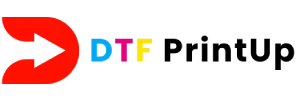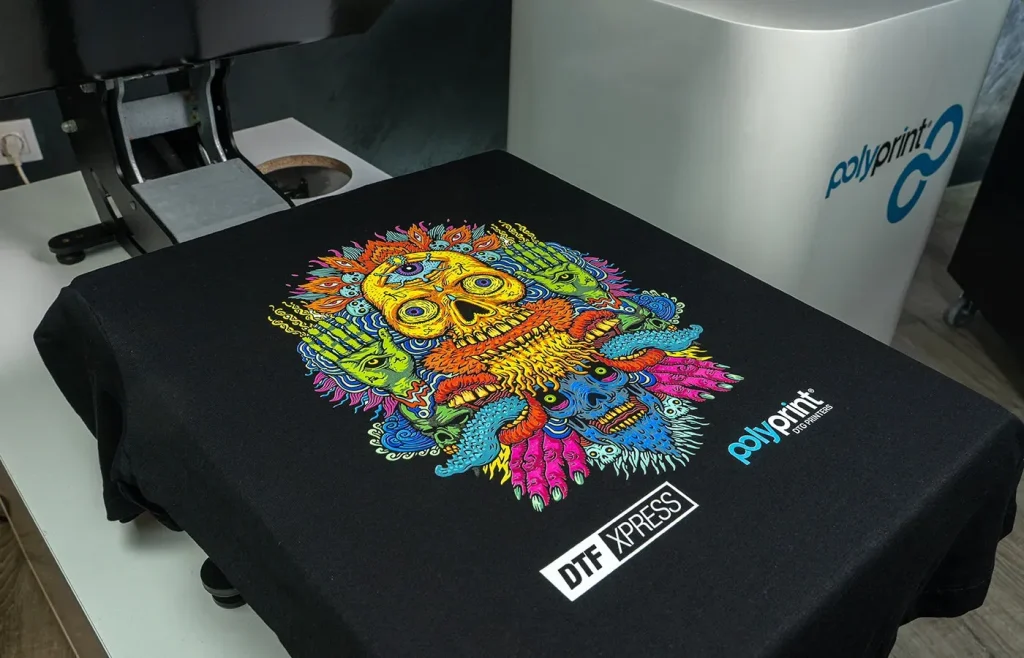DTF printing, or Direct to Film printing, has revolutionized the way designs are applied to fabric, combining innovation with versatility. This cutting-edge technology transfers vibrant, intricate artwork directly onto a specialized film, which is then heat pressed onto various textiles. As the demand for custom garment printing skyrockets, DTF technology stands out due to its cost-effectiveness and ease of use, appealing to both professionals and enthusiasts alike. Whether you’re in need of promotional materials or one-of-a-kind apparel, DTF printing offers reliable fabric printing solutions that deliver high-quality results. Delve into this comprehensive guide to understand how DTF printing is transforming the landscape of textile printing.
Also known as Direct to Film technology, this modern printing method is reshaping the fabric printing landscape by enabling intricate designs to be easily applied to a variety of fabrics. The unique process involves transferring prints onto a special film before heat pressing, which significantly simplifies custom garment decoration. With its capability to produce vivid colors and detailed graphics, this innovative approach addresses the rising demand for personalized textiles. Whether you’re a small business or a hobbyist, exploring DTF’s extensive range of applications offers a glimpse into the future of custom garment printing. Discover how DTF’s adaptability and efficiency are making it an essential method in contemporary textile printing.
What Makes DTF Printing Unique?
DTF printing, or Direct to Film printing, distinguishes itself through an innovative approach that allows for bold and vibrant designs to be printed onto a special film before being applied to fabrics. Unlike traditional methods such as screen printing, which often involve extensive setup and material costs, DTF technology provides a streamlined process that is particularly advantageous for small businesses and custom garment printing. The versatility of DTF enables it to work seamlessly with a variety of textiles, from cotton to polyester blends, effectively catering to diverse customer needs.
The capability of DTF printing to replicate detailed artwork is another characteristic that sets it apart from other textile printing solutions. The precision and durability of the prints make them ideal for custom apparel, promotional products, and unique merchandise. Furthermore, DTF technology eliminates the need for pre-treatment of fabrics, which can be a significant barrier in other printing methods, thus enhancing efficiency and reducing turnaround times for projects. This unique blend of versatility and reliability has cemented DTF printing as a go-to option in the custom fabric printing landscape.
Benefits of Choosing DTF Technology for Custom Fabric Printing
Opting for DTF printing as your custom fabric printing solution introduces a myriad of advantages. One of the most notable benefits is cost-effectiveness; DTF requires lower startup costs compared to traditional printing methods like screen printing. This economic advantage makes it particularly attractive for small business owners and print shops looking to offer custom designs without the burden of heavy investment in equipment or materials. Additionally, the ability to easily create small runs of personalized products aligns perfectly with market trends leaning towards customization and on-demand printing.
Another key benefit is the exceptional quality that DTF technology provides. DTF prints are characterized by bright colors, intricate details, and robust durability, ensuring that they withstand numerous washes without fading. This durability makes DTF ideal for high-volume apparel production, ensuring customer satisfaction and repeat business. Furthermore, with ongoing technological advancements in DTF printing equipment and inks, the quality and speed of printing continues to improve, making it an ever more desirable option for businesses in the textile printing industry.
Sustainability is also an essential consideration, and many DTF printing processes are designed with environmental sensitivity in mind. The use of water-based inks in DTF technology aligns with the growing desire for eco-friendly practices in manufacturing, representing a shift toward responsible production methods. As consumers increasingly seek out sustainable products, businesses utilizing DTF technology can meet this demand and enhance their market appeal.
Recent Innovations in DTF Printing
The DTF printing landscape is rapidly evolving, propelled by recent innovations that enhance its functionality. Recent advancements in printing machinery, including automated film cutting and improved software integrations, have significantly streamlined the DTF printing process. These technologies not only improve the efficiency of setup and production but also unlock new creative possibilities for designers, enabling them to push the boundaries of fabric printing. As machine manufacturers introduce more user-friendly models, the barrier to entry for newcomers in the industry diminishes, increasing the accessibility of DTF technology.
Additionally, the DTF printing market is experiencing a surge due to rising consumer demand for bespoke products and on-demand printing solutions. According to market research, businesses are increasingly adopting DTF technology as a means of capitalizing on this trend, thus enhancing their competitiveness. As training resources and educational workshops become more commonplace for mastering DTF printing techniques, aspiring printers are equipped with the skills necessary to realize high-quality results. This commitment to advancing the DTF landscape underscores the technology’s burgeoning role in reshaping the textile printing industry.
Comparing DTF Printing to Other Methods
When examining the landscape of fabric printing solutions, it’s crucial to compare DTF printing with traditional methods such as Direct to Garment (DTG) and sublimation printing. While DTG is renowned for its high-quality outputs, it often requires pre-treatment of fabrics, which can impede production efficiency. On the other hand, DTF technology shines with its ability to print on a broader range of fabrics, including darker materials, without the need for pretreatment, expanding creative horizons for custom garment printing.
Sublimation printing, while effective for producing vibrant designs on polyester fabrics, cannot be utilized on cotton or blended materials, giving DTF printing a distinct edge when versatility is essential. This adaptability makes DTF printing a favorite among businesses looking to provide a diverse range of products. The trade-offs in speed, cost, and substrate compatibility highlight the unique attributes of DTF technology, establishing a strong case for its adoption in modern textile printing practices.
Economics of DTF Printing for Small Businesses
For small businesses venturing into the world of custom fabric printing, understanding the economic implications of DTF technology is key. One of the primary attractions of DTF printing is its lower startup costs compared to more traditional methods. This affordability allows small enterprises with limited budgets to effectively compete within the textile printing market, reducing barriers to entry and enhancing accessibility for aspiring entrepreneurs. Such economic feasibility resonates with the rising trend of small-scale production runs that prioritize customization.
Moreover, the cost-effective nature of DTF printing is not solely found in the initial setup but also in the ongoing production processes. DTF allows for quick turnaround on small orders, which is vital in a market where speed and agility are highly prized. This capacity to respond rapidly to customer demand, without sacrificing quality, positions businesses utilizing DTF technology to benefit significantly from increased sales and customer loyalty, ultimately driving profitability in a competitive landscape.
The Future of DTF Printing in Fashion and Retail
As the fashion and retail industries continue to evolve, DTF printing is poised to play a transformative role in how businesses approach custom apparel production. The ability to quickly respond to changing consumer preferences with on-demand printing solutions positions DTF technology as an essential tool for brands seeking to remain relevant and agile in the fast-paced market. With sustainable practices becoming imperative in fashion, DTF’s eco-friendly approach also resonates with a consumer base increasingly concerned with ethical production.
In the coming years, we can expect DTF printing to integrate further with advanced technologies such as AI and automation, paving the way for unprecedented efficiency in design and production. The future of DTF printing also appears bright as market research suggests continued growth fueled by the desire for personalized, high-quality, and sustainable products. As businesses harness the potential of DTF technology, they will undoubtedly shape the fabric of future fashion, catering to a demographic that values uniqueness and environmental responsibility.
Frequently Asked Questions
What is DTF Printing and how does it work?
DTF printing, or Direct to Film printing, is an innovative technique that uses a specialized film to transfer vibrant designs onto various fabrics. The process involves printing a design onto a film with eco-friendly inks, which is then heat-pressed onto the textile, allowing for high-quality, durable prints suitable for custom garment printing.
What are the main benefits of using DTF technology for custom garment printing?
The main benefits of DTF technology include its versatility to print on a wide range of fabrics such as cotton and polyester, lower setup costs compared to traditional screen printing methods, and the ability to produce vibrant, durable prints that withstand washing. This makes it a popular solution for custom garment printing.
How does DTF printing compare with other textile printing methods?
DTF printing stands out from other methods like DTG and sublimation due to its versatility. Unlike DTG, which usually requires pre-treatment of fabrics, DTF printing can be applied directly onto various fabric types without additional steps. Additionally, DTF technology often provides superior color vibrancy and durability.
Is DTF printing environmentally friendly?
Yes, DTF printing can be environmentally friendly. Many DTF printing processes utilize water-based inks and aim to minimize waste. As the demand for sustainable textile printing solutions grows, DTF technology aligns with this trend by offering an eco-conscious alternative to traditional methods.
What advancements have been made in DTF printing technology recently?
Recent advancements in DTF printing technology include improved printing machines that feature automated film cutting, enhanced software integration for user ease, and advancements in ink formulations. These developments have contributed to higher efficiency, quality, and speed in the printing process.
What types of businesses can benefit from DTF printing?
DTF printing is beneficial for a wide range of businesses, especially small to medium-sized enterprises that require custom garment printing solutions. It caters to businesses in fashion, promotional products, and merchandise, allowing them to offer unique, high-quality printed items with lower initial investment costs.
| Key Features/Aspects | Details |
|---|---|
| What is DTF Printing? | A digital printing technology that transfers designs onto fabric via a specialized film using a heat press. |
| Versatility | Ability to print on various fabric types including cotton, polyester, and blends, making it suitable for custom clothing and merchandise. |
| Lower Setup Costs | Significantly lower initial setup costs compared to traditional printing methods, making it ideal for small runs of garments. |
| Quality and Durability | High-quality outputs with vivid colors and remarkable durability, lasting well after multiple washes. |
| Environmental Considerations | Utilizes water-based inks and aims to reduce waste, aligning with eco-friendly trends in printing. |
| Market Growth | DTF printing market is set to grow due to increased demand for customized and on-demand printing solutions. |
| Technological Advancements | Innovations are enhancing efficiency, quality, and speed, including automated film cutting and software integration. |
| Training and Resources | Increased educational resources like workshops and webinars are available to help users improve their skills in DTF printing. |
| Comparison with Other Printing Methods | Often compared with sublimation and DTG printing, DTF offers superior versatility without the need for pre-treatment. |
Summary
DTF printing is a highly innovative and versatile method that has been revolutionizing the textile printing industry. This technology not only allows for intricate designs to be transferred onto various fabric types but also offers significant advantages such as lower costs for setup and high-quality, durable prints. With the ongoing advancements in printing technology and a focus on sustainable practices, DTF printing is becoming a favored choice among businesses and hobbyists alike. Its ability to adapt to diverse printing needs and deliver exceptional results makes DTF printing a critical player in the future of customized textiles.



